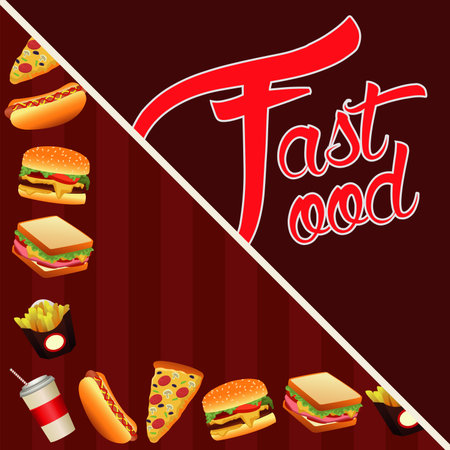Understanding Fasting Traditions in India
Fasting is deeply woven into the cultural and spiritual fabric of India, observed by millions across different religions and regions. In Hinduism, fasting (known as “vrat” or “upvas”) is seen not only as a way to please deities but also to cleanse the body and mind. Major Hindu festivals like Navratri, Maha Shivaratri, Ekadashi, and Karwa Chauth are closely linked with specific fasting rituals. Similarly, Jainism observes Paryushan and other fasts for self-purification, while Muslims undertake the holy month of Ramadan by abstaining from food and water from dawn to dusk. Sikhs may fast during Gurpurabs or other auspicious occasions, although Sikhism generally encourages moderation over strict fasting. Even within Christianity and Buddhism in India, fasting holds significance during Lent or Buddha Purnima. Each community has its own set of traditions, practices, and dietary guidelines during these periods. While the motivations range from seeking divine blessings to achieving discipline and self-control, fasting remains a shared thread that connects people across India’s diverse religious landscape.
2. Common Fasting Foods Across India
Fasting traditions in India revolve around a sattvic (pure and light) diet that nourishes the body while aligning with spiritual practices. These foods are simple, easy to digest, and believed to enhance clarity of mind during periods of abstinence. Let’s explore some of the most popular fasting foods consumed across various regions of India and understand why they are favoured choices.
Popular Sattvic Foods Consumed During Fasts
| Food Item | Description | Nutritional Benefits | Why Preferred During Fasting? |
|---|---|---|---|
| Sabudana (Tapioca pearls) | Often used in khichdi, vada, or kheer for fasts like Navratri | Rich in carbohydrates; provides quick energy boost | Easily digestible and keeps you full for longer hours |
| Fruits (banana, apple, papaya, etc.) | Consumed as is or in fruit chaat/salads | Packed with vitamins, minerals, and natural sugars | Provides hydration and essential nutrients without heaviness |
| Dairy products (milk, curd, paneer) | Used in drinks or as accompaniments to fasting meals | Good source of protein and calcium; satiating | Sustains energy levels and supports digestion |
| Potatoes & Sweet Potatoes | Cooked in curries or fried as chips/pakoras using fasting flours | High in starch; rich in potassium and fibre (sweet potato) | A filling option when grains are restricted; versatile ingredient |
| Kuttu ka Atta (Buckwheat flour) | Used to make puris, rotis, or pakoras during fasts like Navratri | Gluten-free; contains fibre, protein, and magnesium | Allowed during fasts; provides necessary carbs and proteins |
| Samak Rice (Barnyard Millet) | An alternative to regular rice; prepared as pulao or kheer | Easily digestible millet; low glycemic index | Mimics rice texture and taste without violating fasting rules |
| Makhana (Fox nuts/lotus seeds) | Eaten roasted or added to kheer/curries for snacking | Low calorie; high in protein and antioxidants | Light on stomach; curbs hunger pangs between meals |
| Dry Fruits & Nuts (almonds, cashews, raisins) | Eaten raw or added to milk/fruit bowls for extra nutrition | Packed with healthy fats, proteins, and micronutrients | Nourishes the body and keeps you energised throughout the day |
The Nutritional Science Behind These Choices
The selection of sattvic foods is not just about tradition—it’s also rooted in nutritional logic. Most fasting-friendly foods are easy on the digestive system, provide sustained energy release due to their complex carbohydrates (like sabudana and millets), and help maintain electrolyte balance. Dairy products offer much-needed protein when legumes are avoided. Fruits hydrate the body and supply antioxidants. This carefully curated list ensures that fasters do not feel depleted while adhering to religious restrictions.
Cultural Nuances Across Regions
The core idea behind fasting diets remains largely consistent—purity, simplicity, and nourishment. However, each Indian state may have its own unique favourites: Gujaratis love farali chevdo made from potatoes and peanuts; Maharashtrians enjoy sabudana khichdi; North Indians often opt for kuttu ki roti. Regardless of regional variation, these foods honour both the health of the individual and the spirit of the occasion.

3. What Should You Avoid While Fasting?
During fasting in India, certain foods and ingredients are traditionally avoided based on religious beliefs and long-standing customs. Knowing what to restrict is as important as knowing what to eat, and these guidelines can differ depending on the festival, community, or personal practice.
Common Foods Restricted During Indian Fasts
1. Grains like Rice and Wheat
Most Indian fasts—such as Navratri or Ekadashi—prohibit grains like rice and wheat. Instead, alternatives such as buckwheat (kuttu), amaranth (rajgira), or sabudana (tapioca pearls) are preferred. This restriction is rooted in the idea that grains generate heat in the body and may not be sattvic (pure) according to Ayurveda.
2. Onion and Garlic
Onions and garlic are widely avoided during fasting. In Hindu tradition, these are considered tamasic and rajasic foods—meaning they can increase passion or lethargy, which distracts from spiritual practices and meditation. The focus during fasting is to consume only sattvic (pure, light) foods that promote clarity and calmness of mind.
3. Processed and Packaged Foods
Packaged snacks, processed foods, and anything containing preservatives or artificial additives are generally avoided. Fasting is seen as an opportunity to detoxify the body, so only freshly prepared meals with minimal spices are encouraged.
The Religious and Scientific Reasons Behind Restrictions
The primary reason for these restrictions is spiritual discipline—simplifying food helps redirect energy towards prayer and self-reflection. Scientifically, avoiding heavy or processed foods allows the digestive system to rest, promoting better health outcomes during extended fasting periods.
By understanding these traditional restrictions, you can plan your fasting menu more thoughtfully and respect both cultural values and your well-being.
4. Regional Variations in Fasting Foods
Indias fasting traditions are as diverse as its regions, with each part of the country embracing unique ingredients and customs during fasting periods. Understanding these regional differences is key to respecting local practices and making informed choices about what to eat or avoid.
North India
In North India, Navratri and other fasting occasions often feature Kuttu ka Atta (buckwheat flour) and Singhara Atta (water chestnut flour). People commonly prepare dishes like Kuttu ki Puri, Sabudana Khichdi, and Aloo Jeera. Onion, garlic, regular wheat flour, and common salt are strictly avoided.
West India
Maharashtra stands out for using Rajgira (Amaranth) as a staple during fasts. Rajgira laddoo, thalipeeth, and sabudana vada are popular. In Gujarat, people enjoy Samo rice (Moraiyo) and dishes made from potato or sweet potato. Similar to the north, grains like rice and wheat are generally avoided.
South India
In South Indian states such as Tamil Nadu and Andhra Pradesh, the focus shifts to fruits, milk-based sweets, and light snacks made from sago or tapioca. Rice is sometimes allowed in certain communities, but onion and garlic remain restricted. Coconut-based preparations are also widely enjoyed.
East India
Bengal and Odisha have their own set of fasting rules. Here, sabu dana, fruits, milk, and homemade sweets like payesh (rice pudding) are prominent. Lentils and regular cereals are generally not consumed.
Quick Comparison Table: Regional Fasting Staples
| Region | Main Staples Allowed | Avoided Foods |
|---|---|---|
| North India | Kuttu flour, Singhara flour, Sabudana, Potatoes | Rice, Wheat, Lentils, Onion & Garlic |
| West India | Rajgira (Amaranth), Samo rice, Sabudana, Potatoes | Cereals (Rice/Wheat), Pulses |
| South India | Tapioca/Sabudana, Fruits, Milk Sweets, Coconut | Lentils (varies), Onion & Garlic |
| East India | Sabu dana, Fruits, Milk-based sweets (Payesh) | Lentils, Regular Cereals |
Cultural Tip:
If you are observing a fast in a different region of India or joining friends for a festival like Navratri or Ekadashi, always check local traditions for specific do’s and don’ts. Even the type of salt used—sendha namak (rock salt)—can differ by region!
5. Practical Tips for Healthy Fasting
Maintaining Energy and Hydration
During fasting, especially in the Indian context where weather can be hot and humid, staying hydrated is essential. Start your day with a glass of water or coconut water to restore fluids. Throughout the fasting period, sip on natural drinks like nimbu pani (lemon water without sugar), chaas (spiced buttermilk), or plain lassi. Avoid caffeinated beverages as they can dehydrate you. For sustained energy, include slow-digesting foods such as sabudana khichdi, kuttu ki roti, or boiled sweet potatoes in your meals. These foods release energy gradually and help prevent fatigue.
Smart Meal Planning for Fasting Days
Plan your meals ahead to avoid last-minute unhealthy choices. Prepare simple, easily digestible dishes using permitted ingredients such as samak rice, fruits, and milk products like curd or paneer. Incorporate nuts like almonds and walnuts for healthy fats and protein. Remember to use minimal oil and opt for steaming, roasting, or boiling instead of deep-frying. For those observing longer fasts (nirjala or partial fasts), keep fruit salads or boiled potatoes ready to eat when breaking your fast.
Tips for Office-Goers and Students
If you are working or studying during fasting days, pack portable snacks like roasted makhana (foxnuts), dates, or dry fruits mix. Carry a small bottle of water or homemade electrolyte drink to stay hydrated throughout the day. Try to schedule demanding tasks during times when your energy is highest—usually soon after suhoor/sehri (pre-fast meal) or before breaking the fast in the evening.
Breaking Your Fast Safely
Avoid overeating or indulging in oily snacks immediately after fasting. Instead, start with a glass of water and some fresh fruits like banana or papaya to gently rehydrate and provide instant glucose. Follow up with a light meal consisting of sabudana khichdi, vrat-friendly vegetables, or dahi-aloo curry with kuttu chapati. This prevents digestive discomfort and helps your body transition smoothly from fasting to regular eating.
6. Common Myths and Mistakes During Fasting
Fasting in India is surrounded by several myths and common mistakes that can impact both the spiritual intent and the health benefits of your fast. Let’s debunk some widespread misconceptions and learn how to make fasting a healthier, more meaningful experience.
Myth 1: All Dairy Products Are Permitted
A popular belief is that all dairy products are allowed during fasting. However, traditional Indian fasting norms often restrict processed cheese or flavoured yoghurts, especially those containing additives or preservatives. Stick to fresh milk, homemade curd (dahi), paneer, or ghee for authenticity and purity.
Myth 2: Fasting Leads to Weakness
Many assume that fasting inevitably causes weakness or fatigue. In reality, if you plan your meals with nutrient-rich foods like sabudana (tapioca pearls), fruits, nuts, and root vegetables, you can maintain energy levels throughout the day. Hydration is also crucial — drink enough water, coconut water, or buttermilk to avoid dehydration.
Myth 3: Fried Foods Are Fine Because They’re “Fasting-Friendly”
Packed vrat snacks like sabudana vada or potato chips are often deep-fried in oil and consumed liberally during fasts. While technically permitted ingredients are used, too much fried food can cause digestive discomfort and negate the health benefits of fasting. Opt for steamed or roasted alternatives when possible.
Mistake: Ignoring Balanced Nutrition
Relying solely on starchy or sugary foods during fasts is a common error. To ensure balanced nutrition, include a variety of fruits, nuts, seeds, and low-fat dairy along with moderate portions of starchy foods like samak rice or kuttu atta (buckwheat flour).
How to Make Your Fast Healthier & More Meaningful
– Prepare fresh meals at home instead of packaged vrat foods
– Listen to your body’s needs; break the fast if you feel unwell
– Include sattvic foods for holistic nourishment
– Practice moderation even with permitted foods
– Use fasting as an opportunity for self-reflection and mindful eating
By understanding these myths and avoiding common pitfalls, you can turn your fast into a period of renewal — both physically and spiritually — while respecting Indian traditions.

